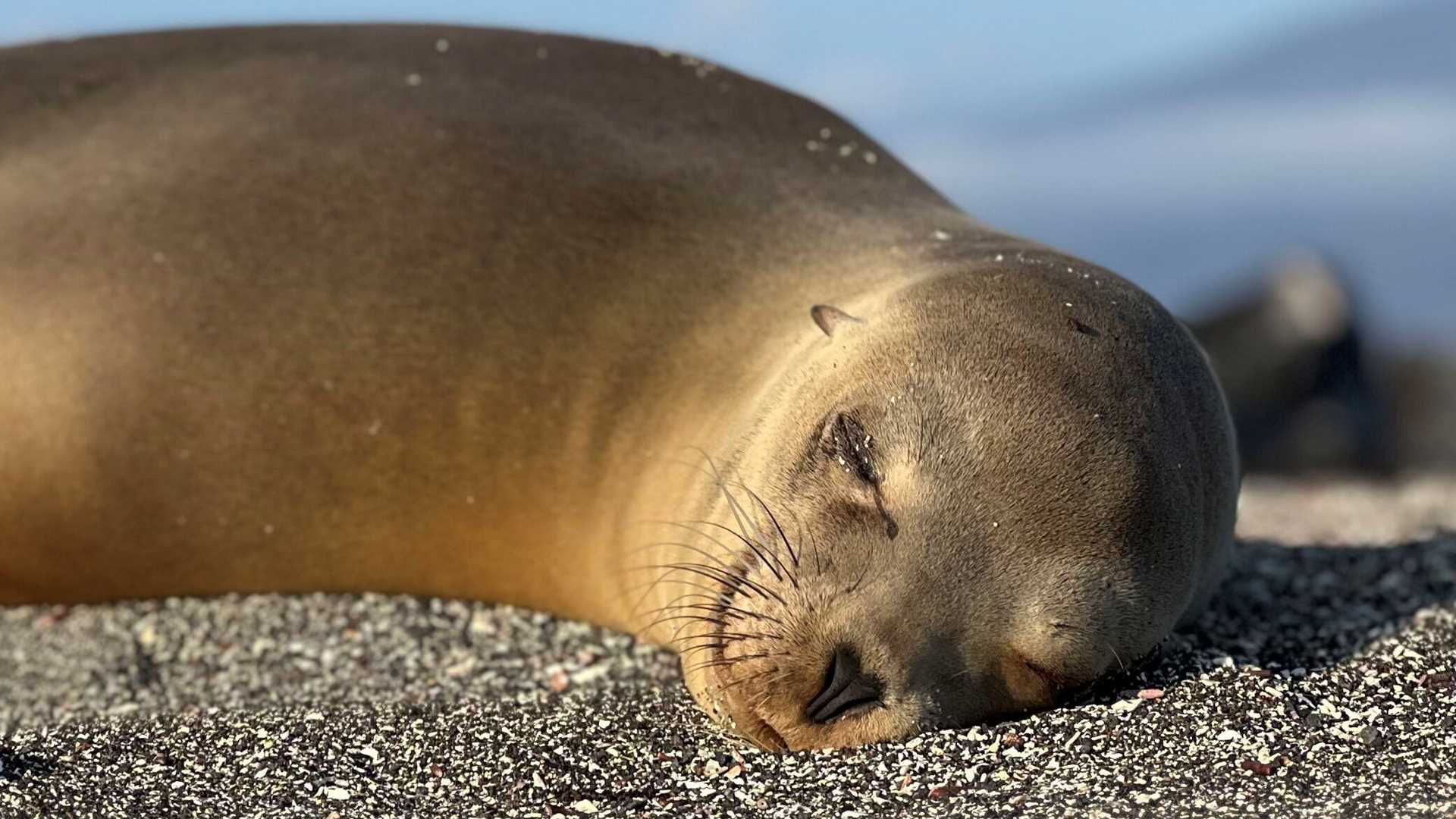Today we came to explore the plankton-rich area of western Galapagos, where unique species inhabit the two youngest islands, Fernandina and Isabela islands. Before breakfast, our expedition leader Carlos Romero woke up us with great news: a school of common dolphins were swimming and jumping by our ship. What a great way of starting our day.
The morning was sunny, and the ocean was calm when we disembarked at Punta Espinoza, one of the most pristine spots in Galapagos. During our coastal walk, we saw tons of marine iguanas all over the place. They bask in the sun to raise their body temperature after spending time in the cold waters to feed on algae. Galapagos marine iguanas are one of the best examples of adaptation and one of the most ancient species, having lived on Galapagos since 3.2 million years ago.
During our exploration, we found Galapagos hawks, multicolored Sally Lightfoot crabs, American oystercatchers, blue-footed boobies, and pelicans feeding at the subtidal zone. The very fresh lava plus the white sandy beaches showed a great contrast of textures and colors. A few mangroves were colonizing the coast of this very young island. Far in the background were very active shield volcanoes, which last erupted only two years ago.
After our hike, we snorkeled from Zodiacs. Our guests enjoyed sharing the water with many sea turtles swimming very close to their masks, while marine iguanas fed among colorful fish, diving cormorants, and sea lions.
In the afternoon, we took Zodiac rides along the Ecuador volcano’s very impressive cliffs and its many lava dikes. The amazing geology included tuff cones, pyroclastic rocks, lava flows, and caves. Frigates, boobies, herons, flightless cormorants, and sea turtles were seen everywhere.
Later, our captain navigated the ship to the equator, and we celebrated the crossing. It’s not every day that you get to cross the equator line on a ship. We enjoyed some Latin American wine while appreciating the magnificent scenery and a warm orange sunset.







